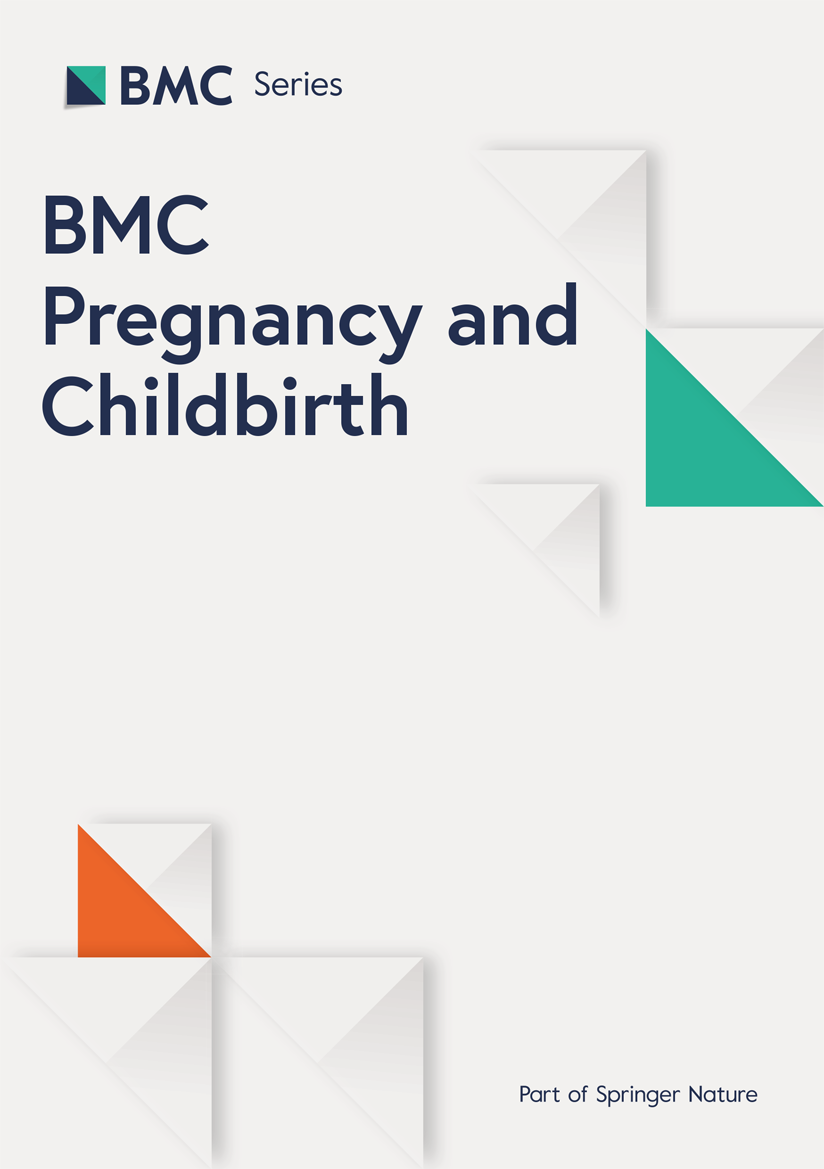Prevalence and associated factors of caesarean section delivery: analysis from the Nepal Demographic and Health Survey 2022
Prevalence and associated factors of caesarean section delivery: analysis from the Nepal Demographic and Health Survey 2022
Ensuring equitable access to emergency obstetric care is essential for reducing maternal mortality. This study examines the prevalence and associated factors of caesarean section (CS) delivery in Nepal during 2022.
This study used secondary data from the 2022 Nepal Demographic and Health Survey (NDHS) for the analysis, employing stratified two-stage cluster sampling. The sample comprised 1977 live births from women aged 15–49 years, with CS delivery serving as the outcome variable. Independent variables were categorised into residency, socio-economic, maternal health service and maternal factors. Binary logistic regression was applied to estimate crude and adjusted odds ratios (AORs) for associations, with statistical significance assessed at p<0.05. A complex sample analysis was performed to account for the stratified survey design.
Nepal.
This study included 1977 live births from mothers who delivered within the 2 years preceding the survey, representing women aged 15–49.
CS delivery.
The study analysed factors associated with CS delivery in Nepal using NDHS 2022 data. Rural residence (AOR: 0.581; p<0.001) and regional disparities, particularly in Terai (AOR: 2.651; p<0.05), significantly influenced CS delivery rates. Higher maternal education (AOR: 3.207; p<0.01) and wealth index (richest quintile AOR: 6.729; p<0.001) were associated with increased odds of CS delivery. Delivery in private institutions (AOR: 5.862; p<0.001) and maternal age (35–49 years AOR: 6.151; p<0.001) showed strong associations, while higher birth orders reduced the probability of CS.
The factors influencing CS rates in Nepal include socio-economic status, maternal education, geographical region and access to maternal health services. Regional disparities and the rising prevalence of CS underscore the necessity for equitable healthcare resource allocation and the implementation of need-based approaches and clear, evidence-based guidelines to ensure the appropriate use of CS for improving maternal and child health outcomes.
http://creativecommons.org/licenses/by-nc/4.0/
This is an open access article distributed in accordance with the Creative Commons Attribution Non Commercial (CC BY-NC 4.0) license, which permits others to distribute, remix, adapt, build upon this work non-commercially, and license their derivative works on different terms, provided the original work is properly cited, appropriate credit is given, any changes made indicated, and the use is non-commercial. See: http://creativecommons.org/licenses/by-nc/4.0/.
If you wish to reuse any or all of this article please use the link below which will take you to the Copyright Clearance Center’s RightsLink service. You will be able to get a quick price and instant permission to reuse the content in many different ways.
Maternal health is a fundamental aspect of public health playing a vital role in societal development, which includes but not limited to the health of women during pregnancy, childbirth and the postpartum period.1 2 Healthy mothers are key to ensuring the well-being of families and communities.3 However, inequality in maternal health outcomes persists globally, particularly in low- and middle-income countries like Nepal.4 While motherhood is often a joyful experience, many women suffer from poor health or even mortality, diminishing the positive aspects of this phase.5 6 Addressing maternal health is essential for improving women’s reproductive health,7 a priority formally established by the International Conference on Population and Development in 1994.6 8 Nepal also upholds women’s reproductive rights and mandates maternity care through the Right to Safe Motherhood and Reproductive Health Act, 2075 BS (2018).9
Globally, maternal health challenges remain significant, with approximately 287 000 maternal deaths reported in 2020 alone.1 2 Similarly, Lama and Krishna reported that over half a million women die annually as a result of complications arising from pregnancy and childbirth,10 emphasising the need for comprehensive research to address these issues. Obstructed labour, one of the leading causes of maternal mortality, often necessitates surgical interventions such as caesarean sections (CS).11
Nepal has made significant strides in expanding emergency obstetric care, including the implementation of skilled birth attendant training in nearly all districts, successfully achieving the Millennium Development Goal of reducing maternal mortality to 134 deaths per 100 000 live births by 2015.12–14 Similarly, the Sustainable Development Goal aims to further reduce maternal mortality to 70 deaths per 100 000 live births by 2030.15 In 2005, the Nepal Government introduced the Safe Delivery Incentive Programme, providing cash incentives to encourage institutional delivery: NPR 1500 in the Mountain region, NPR 1000 in the Hills and NPR 500 in the Terai. Since 2009/2010, an additional NPR 800 has been offered to women completing antenatal and postnatal checkups.16 These initiatives have likely contributed to reductions in maternal and child mortality by promoting institutional delivery and ensuring access to CS services when necessary.17 18 While these policies appear equitable, disparities persist in healthcare access and CS rates, potentially influenced by sociodemographic factors examined in this study.
CS is a surgical procedure involving an incision in the mother’s abdomen and uterus,19 performed when vaginal delivery is not possible or safe.20 It is regarded as a safer option for ensuring maternal and perinatal health in such cases.21–23 This procedure has become widespread in both developed and developing countries, reflecting its critical role in maternal healthcare.24 25 The global healthcare community recognises the CS as an essential aspect of reducing maternal and perinatal mortality and improving outcomes during childbirth.26 CS delivery comprises emergency and elective, with emergency CS performed when maternal risk is suspected, while elective CS is scheduled based on fetal maturity assessment.27 28 CS provide vital benefits in cases of medical necessity, safeguarding maternal and infant well-being, but have no advantages when not indicated.26 29
In the context of Nepal, with the rapid rise from 10.2% in 201630 to 18.2% in 202231 in the CS rate, there have been concerns over the growing disparity of obstetric care service access and utilisation. The inequitable distribution of healthcare resources in certain regions with limited healthcare facilities has left millions of people without adequate access to such services and exposed them to the hazards of unsafe delivery.32 CS delivery has witnessed a significant evolution in recent years, reflecting medical advancements and changing maternal healthcare practices.33 This trend reflects changes in birthing preferences and advancements in clinical approaches.34 The prevalence of CS delivery in Nepal has demonstrated a substantial upward trajectory,35 supported by the Nepal Demographic and Health Survey (NDHS) report 2022.29 This rise is attributed to improved healthcare access, heightened maternal awareness and evolving medical guidelines prioritising maternal and fetal well-being. However, this surge in CS rates also raises concerns about potential overuse and associated health risks36 reported by Chu et al.37
The factors contributing to the increase in CS rates are diverse and complex.38 Research has shown that this rise can be linked to various sociodemographic factors,39 such as maternal age, educational level, economic status and occupation.40 Additionally, the weight of the child at birth and the birth order20 play significant roles in determining the CS delivery. The place of residence (rural–urban, ecological region and province) and place of delivery34 41 also influence these outcomes, with these factors impacting different populations in varying ways.
Advocating for regulatory measures to ensure CS delivery is in line with medical necessity and WHO guidelines.26 This approach is underscored by the evolution of medical standards prioritising maternal and fetal well-being, reflecting a worldwide shift in maternal healthcare practices.26 34 The dynamic landscape emphasises continued examination of the rising CS trend, prioritising maternal and neonatal health in the healthcare policies of Nepal. The Nepal Safe Maternal and Newborn Health Roadmap 2030 focuses on improving maternal and newborn health by strengthening healthcare facilities and increasing skilled workforce.42 This study analyses the socio-economic factors influencing CS delivery rates in Nepal, using insights drawn from the NDHS 2022. As CS rates continue to rise globally, it is essential to understand the socio-economic factors driving these trends. This study aims to analyse the socio-economic factors leading to CS delivery, uncover disparities and guide healthcare policies in Nepal.
Nepal, a South Asian country, is administratively divided into seven provinces.43 It features diverse ecological regions, from the Himalayan mountains to the Terai plains.44 Health services include public and private hospitals, with healthcare facilities often limited in rural areas. The country faces socio-economic challenges, with a significant portion of the population living in poverty.45 Despite improvements, access to education and healthcare remains uneven.
The data analysed were obtained from the 2022 NDHS,29 a nationally representative cross-sectional survey conducted by New ERA under the leadership of the Ministry of Health and Population Nepal with technical assistance from informed consent form.46
The 2022 NDHS employed a stratified two-stage cluster sampling method to ensure national representation. Stratification was based on residence type (urban/rural) based on the 2011 Nepal Population and Housing Census, the sampling frame.29 47 In the first stage, Primary Sampling Units (PSUs) were selected using probability proportional to size. In the second stage, households within each PSU were systematically selected.
Women aged 15–49 years with a live birth in 2 years preceding the survey were the unit of analysis. For multiple births during this period, data from the most recent birth were used. Similarly, cases with incomplete or missing medical records and stillbirths were included within the exclusion criteria. Structured questionnaires were administered to women who had resided overnight in selected households. Further details are available in the NDHS 2022 report.
A total of 14 280 households were selected for the survey, of which 13 833 were successfully interviewed, yielding a household response rate of 96.9%. Among the households interviewed, 15 238 women aged 15–49 years were identified as eligible, and 14 845 were successfully interviewed, resulting in a response rate of 97.4%. Of these, 1949 women reported being pregnant within the last 2 years, and 1933 women had a live birth during this period. The total number of live births reported in 2 years preceding the survey was 1977. For this analysis, the sample included all 1977 live births,29 with data drawn from the most recent live birth for each woman when applicable. This flowchart of inclusion criteria for study population drawn from the Demographic and Health Survey (DHS) 2022 is illustrated in figure 1.
CS delivery is an outcome variable that refers to a surgical procedure involving an incision in the mother’s abdomen and uterus, performed when vaginal delivery is not possible, and is considered safer for maternal and perinatal health.22 23 The responses to the question on CS delivery were coded ‘1’ for ‘yes’ and ‘0’ for ‘no’. Simply put, those women aged 15–49 years who delivered their last live birth by surgical procedure are coded as ‘1’.
Based on the objectives of the study and available literature48 49 with consideration in the NDHS 2022, the variables are categorised into four groups: residency, socio-economic, health service and facilities, and maternal factors. Residency factors included the place of residence, ecological region and province. The place of residence was classified as urban or rural. The ecological region was categorised into Mountain (northern region), Hill (mid-hilly region) and Terai44 50 (lowland region), with the Terai region being the most accessible in terms of road connectivity and service availability, followed by the Hill and Mountain regions.51 Provinces were classified based on the current provincial structure of Nepal, including Koshi, Madhesh, Bagmati, Gandaki, Lumbini, Karnali and Sudurpaschim.43
Socio-economic factors comprised maternal education, ethnicity and wealth index. Maternal education, a proxy for education level, was classified as no education, basic level, secondary level and higher level. Adjustments for educational levels were made based on National Education Policy 2076.52 In this study, women who are unable to read and write are categorised as ‘no education’, while those who can read and write but lack formal education and who have completed formal education from grade one to eight are grouped into the ‘basic level’ category, whereas those who attended grades 9 to 12 are classified as having ‘secondary level’. Lastly, women with formal education beyond grade 12 are placed in the ‘higher level’ category. Ethnicity also reclassified into six categories: Brahmin/Chhetri, Dalits, Janajati, Madheshi Muslim and others.44 53 The wealth index used for this study was calculated by principal component analysis based on the easy-to-collect data on a household’s ownership of assets, such as televisions and bicycles; materials used for housing construction; and access to water and sanitation facilities. Households were then categorised into the poorest, poorer, middle, richer and richest groups.51
Health service and facility factors included antenatal care (ANC) visits and place of delivery. ANC visits were categorised into five categories as none, 1, 2–3, 4–7, 8 or more and don’t know. The place of delivery was classified as government health facility, private health facility, non-government organisations, home or others. Maternal factors examined in this study included maternal age, birth order, child size at birth and duration of pregnancy. Maternal age was categorised into three groups: less than 20 years, 20–34 years and 35–49 years. Birth order categorised into 1, 2–3, 4–5 and 6 or 6+, which is used by NDHS. Child size at birth, a proxy measure for birth weight, was categorised as large, average or small, based on the mother’s perception of the baby’s size at birth during the interview.29 51 The duration of pregnancy was categorised into three distinct groups: less than 9 months, 9 months and more than 9 months, with a standard gestational period of 9 months serving as the reference point.29 There was no multicollinearity (VIF <10)54 among the selected study variables and outcome variables.
This study was based on a formative model, and the result was carried out by using quantitative techniques in analysis. Descriptive analysis to summarise sample characteristics and describe the prevalence of CS delivery rates with the 95% CI of CS delivery was assessed for all study variables. Associations between caesarean delivery and study variables were explored through binary logistic regression analysis using complex sample analysis with a crude and adjusted OR. Crude and adjusted OR with 95% CI and p values were presented. Adjusted OR for the four groups were calculated independently, with each analysis specifically adjusting for residence, socio-economic factors, maternal health service and maternal factors, within their respective subgroups only. Analysis of study variables for CS delivery yielded statistically significant results at <0.001, <0.01 and <0.05. A complex sample analysis was conducted considering the 2022 NDHS sampling using cluster and strata.
This study used fully anonymised existing data, with secondary data analysis without direct involvement of patients. The design and implementation of the original survey (NDHS 2022) involved data collection from respondents with the participation of relevant stakeholders in the implementation of the survey.29 Therefore, there was no direct patient involvement in this study.
The results section presents a descriptive analysis of the variables included in the study. Table 1 provides background characteristics of the study population, while figures 2–5, along with table 2 that details the association between independent variables and outcome variable.
Table 1
Background characteristics and prevalence of caesarean section delivery in Nepal
Table 2
Associated factors with caesarean section delivery in the 2022 Nepal Demographic and Health Survey
This study provides an inclusive overview of the variables considered and their association with the likelihood of CS delivery. These variables encompass residential factors, including place of residence by urban–rural classification, ecological region and province. Socio-economic status is represented by indicators such as educational attainment, ethnicity and wealth index. Additionally, maternal health services are examined through ANC visits and place of delivery. Maternal factors, including maternal age, birth order, child size at birth and duration of pregnancy, are also assessed to provide a holistic understanding of their associations with CS delivery rates.
This study included a total of 1977 deliveries that occurred 2 years before the survey. Among these deliveries, 1294 occurred in urban areas, comprising 65.46% of the overall delivery in the surveyed population. Across the different geographical regions, 6.69% of the deliveries were recorded in the Mountain region. The Hill area accounted for 32.81% of the delivery, while the Terai area had the highest proportion with 60.50% of the overall delivery. Table 1 presents the background characteristics of the study population alongside the prevalence of CS delivery in Nepal.
Table 1 reveals that out of a total of 1977 deliveries, 81.79% (1617 deliveries) were accomplished through vaginal delivery, while 18.21% (360 deliveries) were delivered by CS. Out of total delivery, 21.51%of delivery are conducted through CS in urban areas, whereas 11.95% of delivery are through CS in rural areas, which is almost twofold in urban areas. By ecological region, terai and hill regions contain 18.98% and 18.33% of CS delivery, respectively, which is almost double in comparison to CS delivery performed in mountain regions. Bagmati provinces revealed the highest percentages (32.84%) of CS, indicating a relatively greater preference or necessity for CS delivery among the seven provinces. Figure 2 shows the prevalence of CS delivery by place of residence in Nepal.
Mothers with higher education levels exhibit the highest rate of CS delivery, at 47.72%. Mothers belonging to the Brahmin/Chhetri ethnic group accounted for a higher percentage in CS delivery rate of 22.35%. Similarly, the data show that the prevalence of CS delivery relates to the wealth index of respondents. Women in the poorest group have the lowest rate of CS delivery (6.067%), while those in the richest group have the highest rate (38.45%). As wealth increases, the likelihood of CS delivery rises. This trend indicates that the richest women are more likely to undergo CS compared with their poorest counterparts.
The prevalence of CS delivery was comparatively higher (46.81%) among mothers who had eight or more ANC visits. As such, the CS delivery rates in private health institutions are much higher (51.37%), indicating potential differences in medical practices in comparison to other health institution. Figure 3 displays the prevalence of CS delivery by wealth index in Nepal.
The data illustrate the distribution of place of delivery and its relationship with the prevalence of CS delivery. Government health institutions accounted for the majority of births, comprising 61.61% of total delivery, of which 15.12% were CS delivery. In contrast, private health institutions, representing 17.02% of the sample, exhibited a substantially higher CS delivery rate of 51.37%. This disparity underscores the significantly higher prevalence of CS delivery in private health institutions compared with government health institutions. Figure 4 illustrates the prevalence of CS delivery across different settings of place of delivery.
Mothers aged 35–49 exhibited the highest CS delivery rate at 23.96%, reflecting a greater likelihood of CS delivery among older women. Primiparous mothers (first-time mothers) demonstrated a CS rate of 20.77%. Additionally, larger-sized newborns were associated with a higher CS rate of 22.43%, compared with lower rates observed for average and smaller-sized newborns. Among the pregnancies, 87.50% lasted 9 months with a 17.03% CS rate, while shorter and longer durations showed elevated rates of 26.50% and 26.48%, respectively. Prolonged and shorter duration of pregnancies showed the highest prevalence of CS delivery. Figure 5 illustrates the prevalence of CS delivery across different maternal age groups.
Among the study population, the majority of pregnancies lasted 9 months (87.50%), with a CS delivery rate of 17.03%. Pregnancies lasting less than 9 months accounted for 11.22% of the total, exhibiting a higher CS rate of 26.50%. Pregnancies exceeding 9 months represented the smallest proportion (1.27%) but also showed a substantial CS delivery rate of 26.48%. These findings indicate that both shorter and longer durations of pregnancy are associated with elevated rates of CS delivery compared with the standard 9 month duration in Nepal.
The results of the statistical analysis related to CS delivery in Nepal based on the NDHS 2022 is illustrated in table 2. The analysis of this study is based on binary logistic regression to identify factors associated with CS delivery. The study presents both crude odds ratios (COR) and adjusted odds ratios (AOR), along with 95% CI and p values for various predictors.
The results reveal significant disparities in CS delivery rates based on the place of residence. Women in rural areas exhibited a significantly lower likelihood of undergoing CS delivery compared with their urban counterparts, as indicated by an AOR of 0.581 (95% CI: 0.429 to 0.787, p<0.001). Similarly, regional variations are evident, with women residing in the Terai region showing significantly higher odds of CS delivery (AOR: 2.651; 95% CI: 1.125 to 6.249, p<0.05) compared with those in the mountain region, while no significant association was found for the hill region. Provincial-level disparities are also noteworthy. Women in Madhesh Province were significantly less likely to have a CS delivery compared with those in Koshi Province (AOR: 0.338; 95% CI: 0.209 to 0.546, p<0.001), while Bagmati Province showed higher odds of CS delivery (AOR: 1.734; 95% CI: 1.042 to 2.887, p<0.05). In contrast, women in Lumbini, Karnali and Sudurpashchim Provinces demonstrated significantly lower odds of CS delivery, with AORs of 0.392 (95% CI: 0.236 to 0.651, p<0.010), 0.190 (95% CI: 0.087 to 0.419, p<0.001) and 0.219 (95% CI: 0.120 to 0.400, p<0.001), respectively.
Socio-economic factors also play a critical role in determining CS delivery rates. Higher levels of maternal education were strongly associated with increased odds of CS delivery, with an AOR of 3.207 (95% CI: 1.434 to 7.172, p<0.01) for women with higher education compared with those with no education, while no significant association was found for the ethnicity of socio-economic category. Wealth index further underscores inequalities, with women in the richest quintile having significantly higher odds of CS delivery (AOR: 6.729; 95% CI: 3.884 to 11.656, p<0.001) compared with those in the poorest quintile.
Utilisation of maternal health services also significantly influenced CS delivery rates. Women delivering in private institutions were markedly more likely to undergo CS compared with those delivering in government institutions (AOR: 5.862; 95% CI: 4.222 to 8.140, p<0.001), while no significant association was found for the ANC visit. Additionally, maternal age was a significant predictor, with older women (aged 35–49) having the highest odds of CS delivery (AOR: 6.151; 95% CI: 2.866 to 13.200, p<0.001) compared with those under 20 years. Conversely, higher birth orders were associated with significantly reduced odds of CS delivery, particularly for women with four or more children (AOR: 0.139; 95% CI: 0.052 to 0.374, p<0.001). Child size at birth and pregnancy duration also contributed to CS delivery patterns. While child size at birth did not yield significant results, the duration of pregnancy showed a significant association, with women carrying pregnancies for the standard 9 months having lower odds of CS delivery (AOR: 0.618; 95% CI: 0.416 to 0.918, p<0.05) compared with those with shorter and prolonged durations.
The study highlights the association between CS delivery rate and place of residence, socio-economic status and maternal factors, as well as healthcare accessibility in Nepal. Trends in the total proportion of women delivering in Nepal by CS have almost doubled from 10.2% in 201630 to 18.2% in 2022.29 However, this rate surpasses the upper limit (10–15%) recommended by WHO guidelines.26 55 While Nepal’s CS trend aligns with global patterns, as highlighted by Singh et al,56 where the CS rate increased from 12% in 2000 to around 21% by 2015.57 Similar trends are observed in neighbouring countries like Bangladesh, where CS rates increased from 14.3% in 2007 to 24.5% in 2011.39 The WHO threshold has been criticised for not accounting for changing maternal health needs and healthcare advancements, which may justify higher CS rates in certain contexts.58
Cross-sectional design limits causal inferences, while self-reported data introduce recall bias. Additionally, the absence of clinical data in the DHS limits the assessment of the outcome related to CS. Based on data from 1977 live births recorded 2 years preceding the survey, excluding stillbirths, the analysis is performed.
The absence of clinical data in the DHS restricts the ability to assess critical factors such as medical indications, complications and outcomes related to CS.
Based on data from 1977 live births recorded 2 years preceding the survey, excluding stillbirths, the analysis was conducted to examine patterns and outcomes related to maternal and child health.
The prevalence of CS delivery in Nepal demonstrates significant disparities between rural and urban areas. Women residing in rural areas have notably lower odds of undergoing CS rate, with an AOR of 0.581 compared with their urban counterparts. This finding indicates that women in rural areas are approximately half as likely to have a CS as those in urban areas. The difference in CS rates between rural and urban settings highlights the critical role of healthcare infrastructure and the surrounding healthcare environment in influencing delivery practices.59 Women in rural areas often face limited or no access to emergency obstetric care.60 The lower CS rates in rural regions compared with urban areas may be linked to various barriers that exist in accessing maternal and child health services.61 62 These challenges can significantly impact the availability and quality of care for women in rural settings, contributing to the disparity in CS rates. Urban areas, characterised by well-facilitated healthcare systems, advanced medical interventions and different cultural attitudes towards childbirth, exhibit significantly higher CS rates.34 62 Nepal’s safe motherhood and newborn health roadmap 2030 emphasises strengthening health facilities and skilled personnel for equitable access to comprehensive emergency obstetric care, addressing rural gaps in resources and infrastructure despite better-equipped urban facilities.42
Women residing in the Terai region exhibit a twofold higher (AOR=2.651) in CS delivery compared with those in the mountain region, that is, slightly higher than the recommended rate of WHO, which is not good for both mother and child.26 This aligns with existing literature, indicating regional variations in healthcare infrastructure, accessibility and cultural practices34 63 and geographical disparities64 influencing delivery modes.
The study revealed a significant disparity in the use of CS delivery across provinces in Nepal. Research has indicated that Karnali and Sudurpaschim provinces face challenges due to insufficient healthcare facilities65 and lower GDP66 and HDI.67 This may account for the higher CS delivery rates found in areas with more developed maternal and child healthcare services compared with those in Karnali and Sudurpaschim provinces. The NDHS 2016 highlights provincial disparities in CS rates in Nepal, reflecting healthcare access and quality. Urbanised provinces like Bagmati exceed WHO’s 15% threshold, while rural provinces like Karnali and Sudurpashchim report lower rates due to inadequate infrastructure, skilled personnel and comprehensive emergency obstetric care services.30
This study identified maternal education as a critical determinant of CS delivery, showing that women with higher levels of education were over three times more likely to undergo CS (AOR=3.207) compared with those with no formal education. Women with higher levels of education possess greater access to information and resources, enabling them to make informed decisions regarding their health and the well-being of their unborn child.68 Thus, maternal education, particularly in the context of maternal health and newborn care, is a critical determinant that contributes to the increased rates of CS delivery.69 70 This finding is consistent with previous research,71 which highlights the significant impact of maternal education on birth outcomes.
Other significant factors associated with CS delivery in this study included wealth status, with the high-income group having 6.729 times higher odds of undergoing a CS compared with the low-income group in AORs. This finding is consistent with a survey conducted in Nepal in 2021, which showed that the CS rate was 1.78 times higher among wealthy women compared with those in the poorest group, highlighting the influence of socio-economic status on CS delivery.35 Similarly, a survey conducted in Ghana showed that the rate of CS was 2.14 times higher among wealthy women compared with those in the poorest group,72 highlighting socio-economic disparities in accessing and selecting maternity care services. This disparity is consistent with the observations of Pandit34 and Singh et al,56 emphasising the substantial impact of socio-economic factors on the choice of delivery mode. The results indicate that both education and wealth impact CS rates, underscoring the necessity for positive interventions to address socio-economic gaps in maternal healthcare practice in Nepal.
However, Bhandari et al 61 exhibited a strong association with the use of CS distribution among ethnic groups. In this study, the association between ethnicity and CS was found to be very weak. Increasing awareness among people, driven by social, cultural and political changes,73 may eliminate ethnic differences in the use of CS delivery. Despite progress, certain ethnic groups remain underprivileged.74 Therefore, the government of Nepal should prioritise reducing these disparities, ensuring all individuals in need can access CS services from both public and private healthcare facilities.
Maternal health services as an ANC visit play a crucial role in CS delivery. Mothers who visited ANC eight or more times exhibited a significantly higher 3.483 OR with 95% CI on the CS rate compared with no ANC visit. The frequency of ANC visits is associated with CS delivery. Additionally, studies indicate that women who began ANC visits in the first trimester were more likely to have a CS delivery compared with those who started in the third trimester of pregnancy.72 This finding prompts a closer examination of the dynamics between extensive ANC visits and the preference for CS delivery. Increased ANC visits are considered a positive indicator of maternal healthcare engagement, facilitating the early detection and management of potential complications.75 76 However, a clear pattern emerged, with the majority of ANC visitors being urban women with higher economic status and educational levels. CS delivery occurs primarily within this elite group,77 78 indicating an association between frequent visits to the ANC and increased CS delivery rates.
The difference in the likelihood of CS delivery between mothers who delivered in private and government health institutions sheds light on the influence of healthcare settings on birthing outcomes. The AOR of 5.862 in private health institutions compared with government facilities highlights a strong association between the place of delivery and the likelihood of undergoing a CS. This finding is consistent with the study of Sk,79 which found that approximately 13% of children were delivered via CS in public hospitals, whereas the rate was notably higher at 43% in private hospitals. This trend is globally observed.79–81 Additionally, a review study conducted by Sk and Barua,82 from both developed and developing countries revealed that delivering in private hospitals is a key factor contributing to the high rates of CS delivery in both regions.82 This may be influenced by the perceived convenience of scheduled delivery,83 patient demands83–85 and potential financial considerations.56 77 86 The private sector seems to have financial incentives for performing CS delivery.51 79 83 87 88 Elevated rates of CS in private and non-government facilities increase the financial burden on the maternal health service system.89 This emphasises the importance of implementing quality assurance mechanisms, such as the Robson classification, along with policies and protocols to support healthcare professionals in evaluating and ensuring the appropriate use of CS.90 Public and private hospitals in urban centres provide comprehensive emergency obstetric care and advanced care, whereas rural areas face inadequate infrastructure, staff shortages and limited surgical capacity, hindering maternal and neonatal care.91
The association between maternal age and the prevalence of CS delivery was examined by categorising women into three age groups: under 20 years, 20–34 years and 35–49 years. This grouping provides insight into how age affects the likelihood of CS delivery, revealing trends and risks within each age range. This study reveals that mothers aged 35 to 49 had a six-fold higher likelihood of CS delivery (AOR 6.151) compared with those under 20, highlighting the significant impact of maternal age on the mode of delivery. Das et al 35 found similar results, showing that women aged 30 and above had more than twice the odds (2.28) of undergoing a CS delivery compared with those aged 24 and younger.35 Several studies globally have consistently highlighted maternal age as a significant factor in determining the likelihood of CS delivery.92 93 However, previous CS delivery is a key factor in determining the likelihood of subsequent CS delivery.35 The finding aligns with highlighting the association between older maternal ages and higher caesarean rates. The older age of the mother is associated with increased medical complexities that influence CS delivery.34 94 95
The findings indicate that birth weight is a significant factor in the likelihood of CS delivery. Babies of average size are less likely to be delivered via CS compared with larger-than-average babies, with a notable reduction in odds. This may be because larger babies are more prone to complications during vaginal delivery, such as shoulder dystocia,96 97 which raises the likelihood of requiring caesarean intervention. Similar findings indicate that babies with a higher-than-normal birth weight have 2.45 times greater odds of being delivered via CS compared with those with a normal birth weight.35
The findings indicate a strong association between birth order and the likelihood of CS delivery. First-born children are more likely to be delivered via CS compared with those born later, especially fourth and fifth children, who show a remarkably reduced likelihood of CS intervention. This trend may be explained by factors such as the mother’s body having adapted to childbirth with previous delivery, making subsequent births smoother and less prone to complications requiring surgical intervention. However, having a previous CS is a significant predictor of the likelihood of another CS delivery.35
However, the data for smaller-than-average babies did not show a statistically significant difference, indicating that their size might not be a strong predictor of CS delivery compared with average-sized or larger babies. This lack of significance could be influenced by other factors, such as gestational age, maternal health or fetal distress,97 which might play a more prominent role in determining delivery methods for smaller infants than average.
Most pre-term births are spontaneous,98 99 so CS delivery is less common. Unlike this, postpartum pregnancies are associated with an increased risk of complications, making CS more common in pregnancies100 that extend beyond the normal 9 month period. The findings suggest that pregnancies carried to full term (9 months) are less likely to result in CS delivery compared with those ending before 9 months. This could be attributed to the fact that early deliveries are often associated with complications or health conditions requiring surgical intervention. Conversely, pregnancies extending beyond 9 months, or post-term pregnancies, do not show a statistically significant increase in the likelihood of CS delivery compared with those lasting less than 9 months. Although post-term pregnancies are typically associated with higher risks, the lack of significance in this study may indicate that the relationship between extended pregnancy duration and CS delivery is more complex and influenced by other clinical factors.
In particular, socio-economic and residential differentials show the disparity in health receiving patterns and CS delivery. In this way, an exceptionally high 47% of women in urban, educated and wealthy communities have CS delivery and nearly 4% of women in Karnali, which is considered geographically remote.45 It shows unequal distribution and access to health services and facilities in Nepal. Therefore, the CS rate is like a double-edged sword because even if it is high, it does not improve the health of both the mother and the child.26 55 If it is too low, it is associated with maternal, neonatal and infant mortality.101 Therefore, validated tools like the Robson classification102 can support healthcare professionals in systematically assessing CS necessity.
This study identifies key determinants influencing CS rates in Nepal, including socio-economic status, maternal education, geographical location and healthcare accessibility. Rural women encounter significant barriers, resulting in lower CS rates, whereas higher education and economic status are associated with increased rates, reflecting systemic healthcare inequalities. Regional disparities further highlight the influence of infrastructure and economic development on maternal health services. While the rising CS rates align with global trends, concerns persist regarding medically unnecessary interventions. Ensuring equitable access to maternal healthcare is a fundamental human right, requiring a rights-based approach that guarantees all women, regardless of socio-economic background or geographic location, access to medically justified CS procedures. Strengthening rural healthcare systems, optimising resource allocation and following guidelines and valid tools to ensure the appropriate CS for improving maternal and child health outcomes.
Not applicable.
Nepal Demographic and Health Survey (NDHS) received ethical approval from the Ethical Review Board of the Nepal Health Research Council and the informed consent form (ICF) Institutional Review Board. The Demographic and Health Survey (DHS) website offers public access to the NDHS datasets. The NDHS 2022 datasets were made available for download and use after the author requested permission from DHS/ICF. The study relied on completely anonymous, existing secondary data, ensuring no direct involvement of respondents. This approach yielded more reliable estimates while respecting ethical considerations. DHS provides the authorise letter to use dataset 2022. In addition, artificial intelligence has also been used in some cases to ensure linguistic clarity in the text.
We are thankful to DHS for providing an invaluable dataset for this study.








